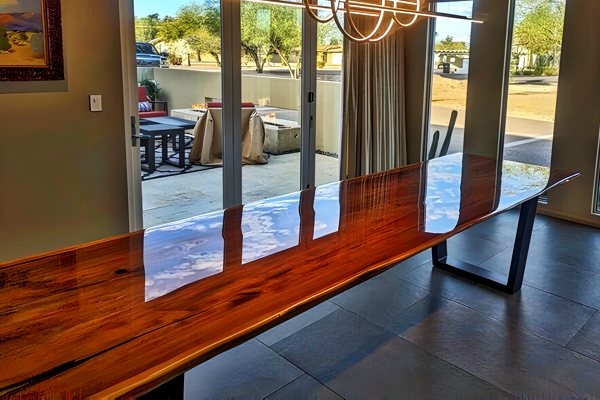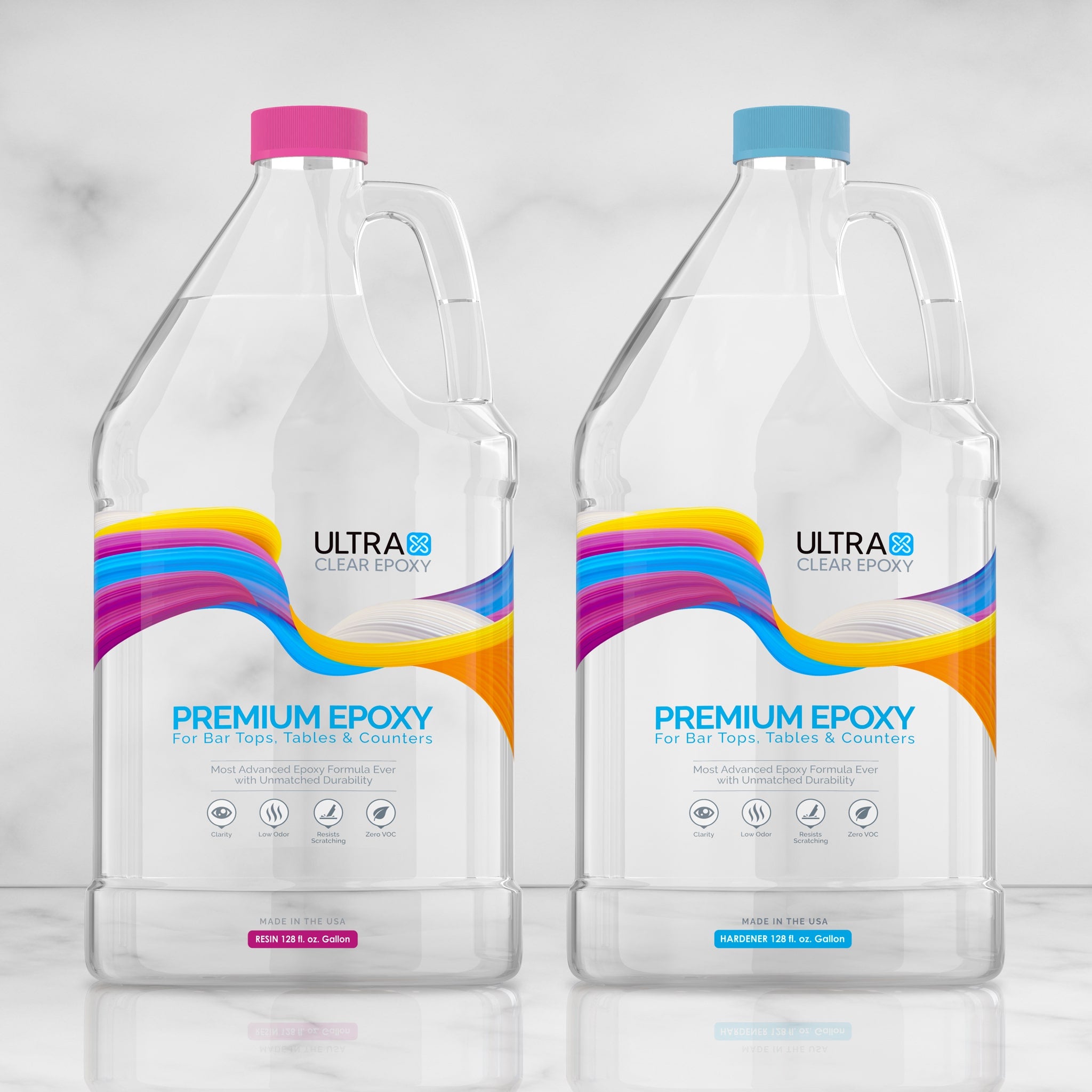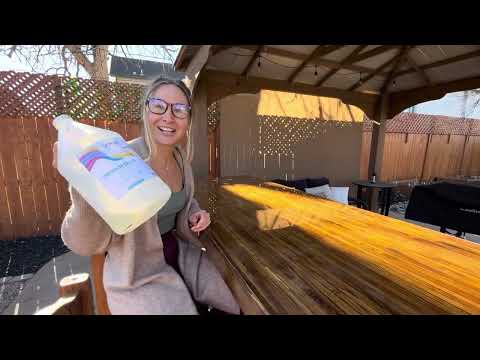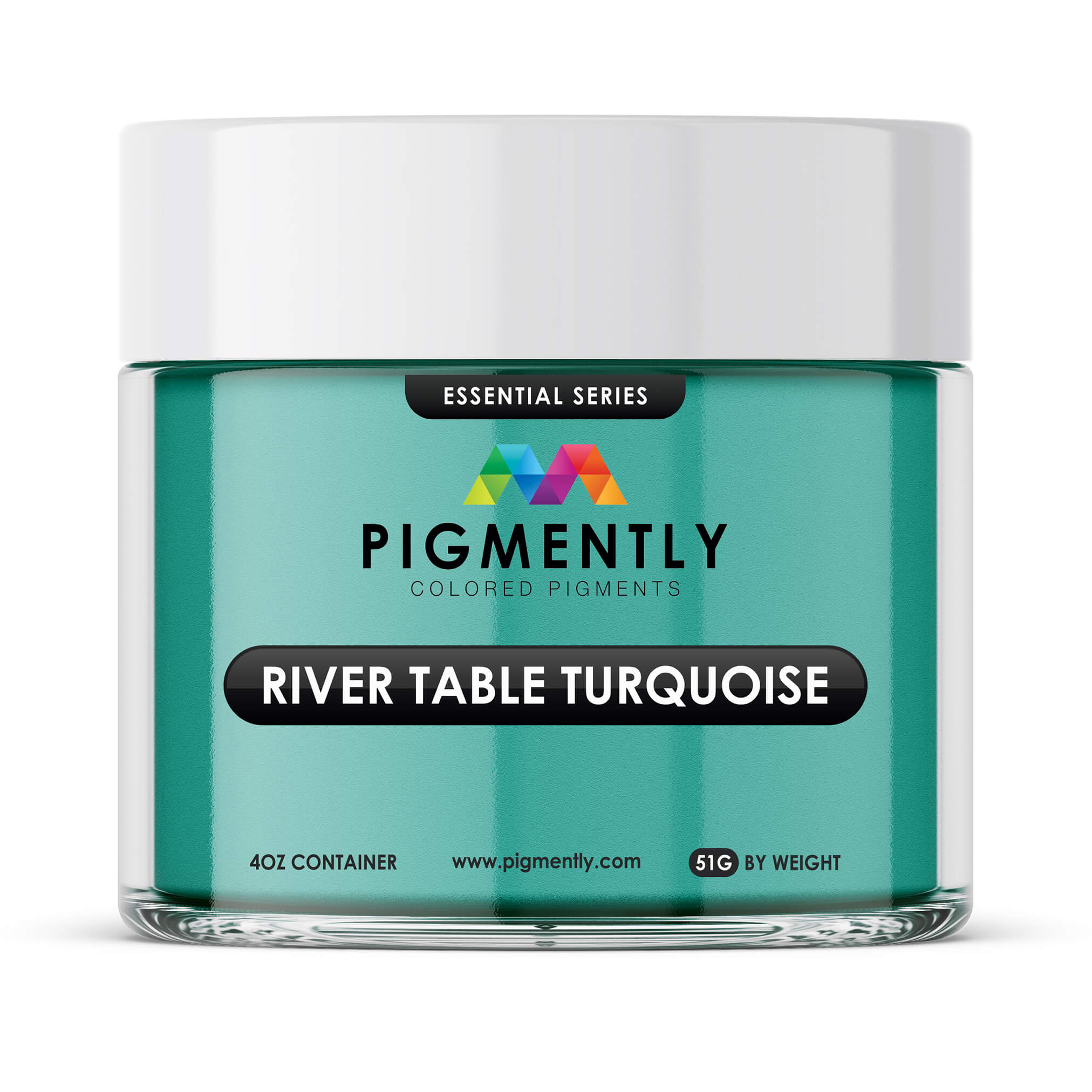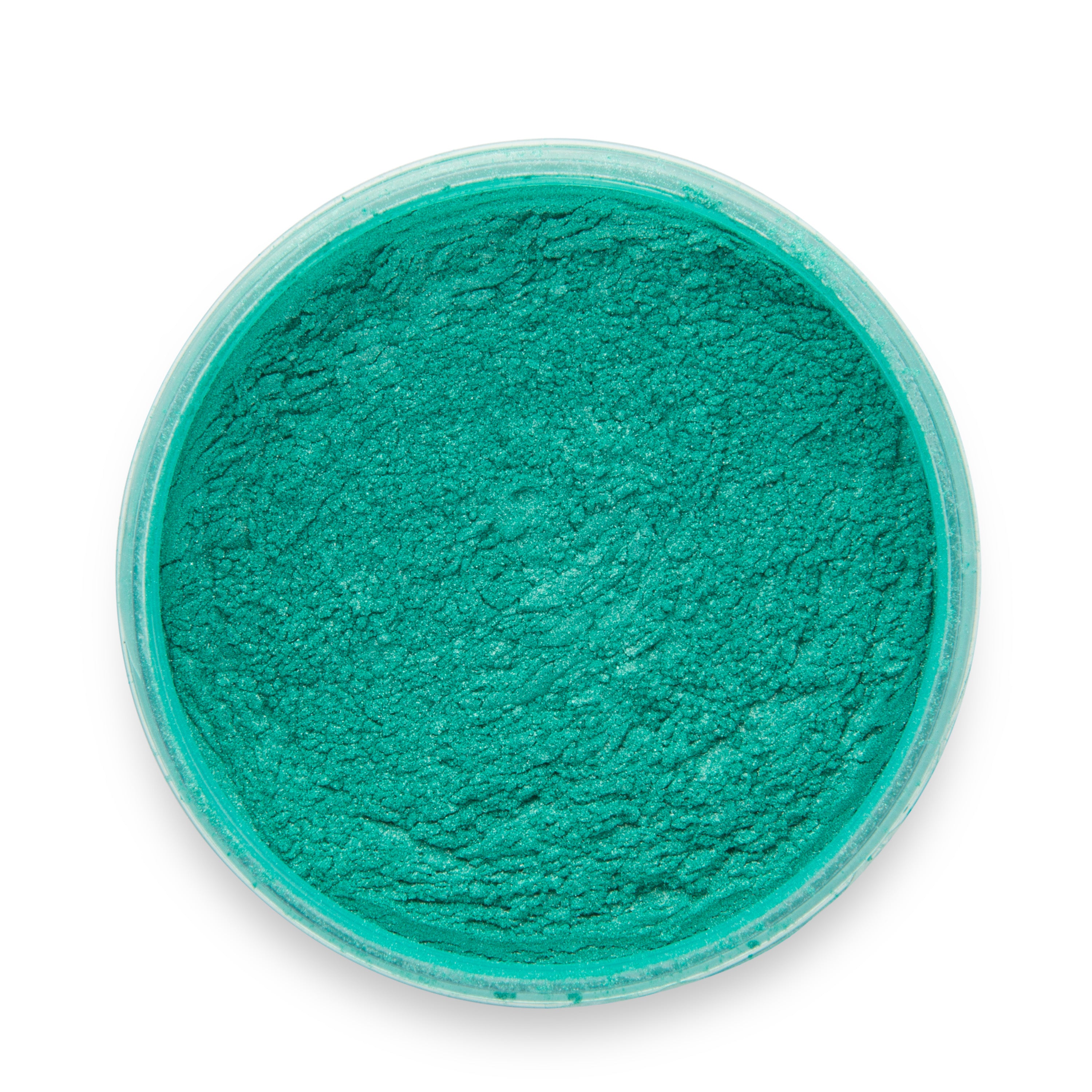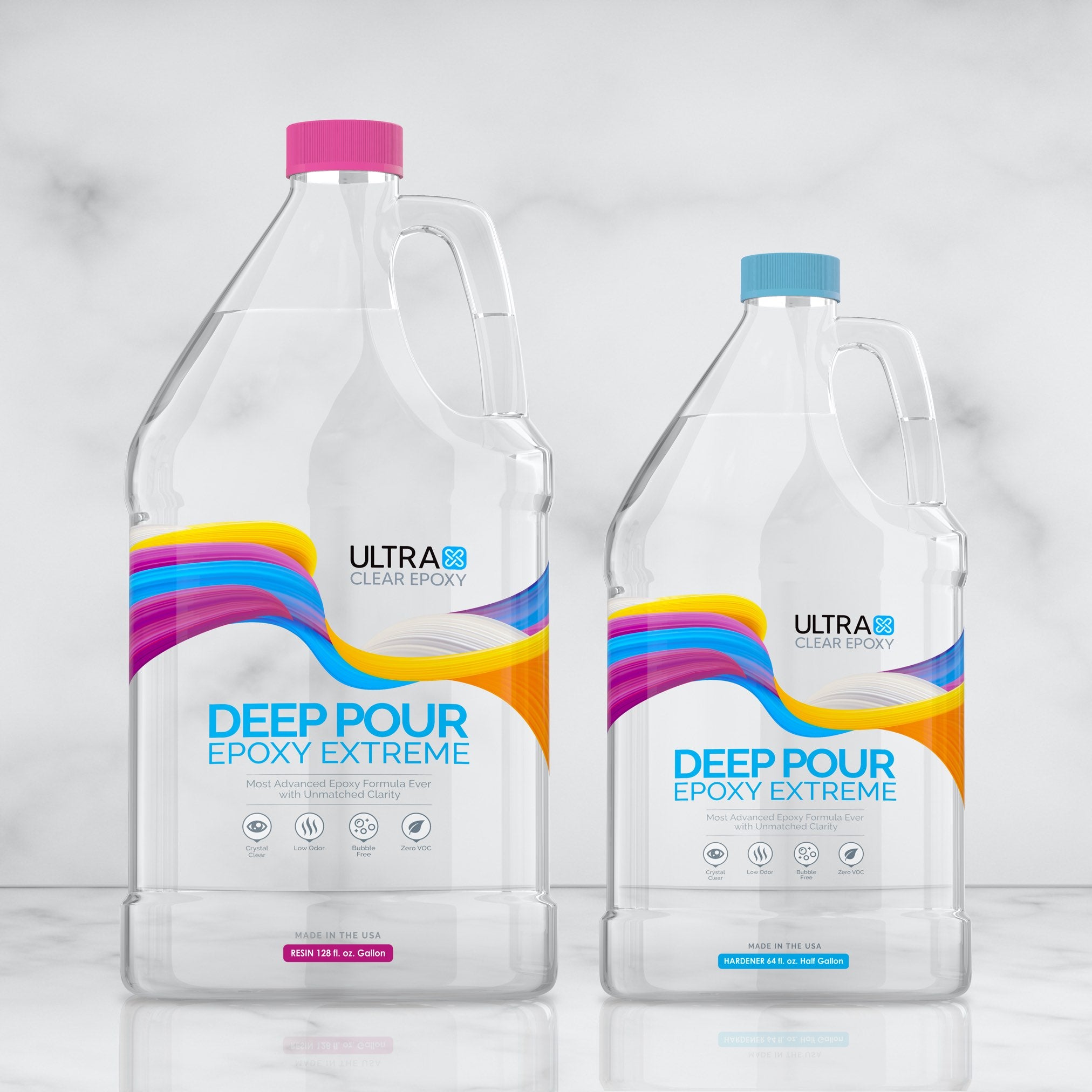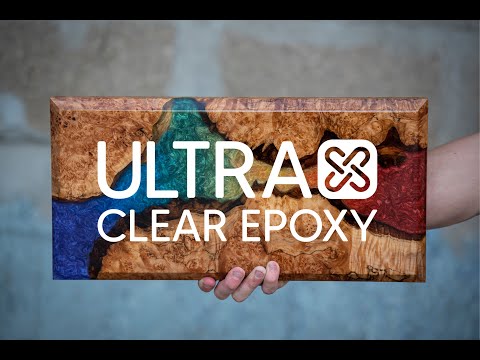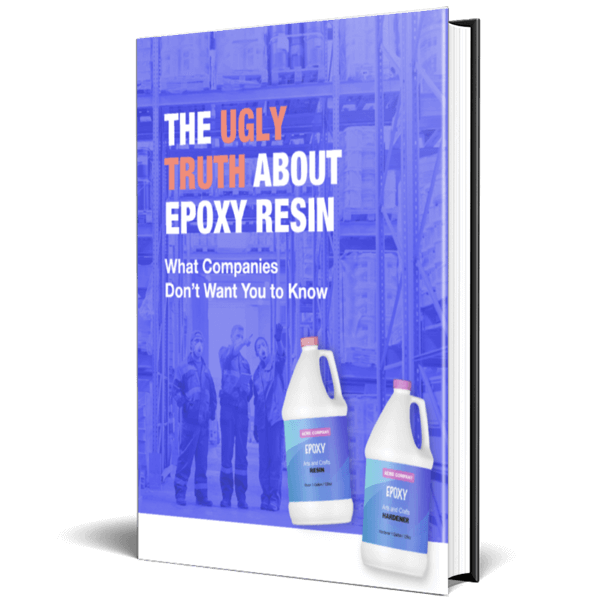Epoxy resin is a remarkable material with countless applications in art, furniture making, and construction. When used correctly, it yields stunning, durable results.
However, problems can arise if the epoxy doesn't cure properly, leading to tacky, sticky, or soft surfaces. This guide will explore why curing issues occur, how to address them, and how to prevent them in future projects.
Common Reasons Epoxy Doesn’t Cure Properly
Understanding why your epoxy might fail to cure is the first step toward resolving the issue or preventing it entirely. Below are the most common reasons for why it happens.
Reason #1: Incorrect Resin-to-Hardener Ratio:
Epoxy resin relies on a precise chemical reaction between resin and hardener to cure. Mixing an incorrect ratio, even slightly, can prevent proper curing. Always follow the manufacturer’s guidelines carefully. UltraClear Epoxy products, including UltraClear Bar & Table Top Epoxy and UltraClear Deep Pour Epoxy, specify exact ratios that must be maintained for successful results. Precision is essential; even small deviations can lead to incomplete curing.
Reason #2: Inadequate Mixing:
Thorough mixing is essential for activating the curing process. Failure to scrape the sides and bottom of your mixing container can leave unmixed components, which will lead to areas that don’t cure. It’s not just about stirring—but about ensuring complete integration. Mix until the epoxy is fully blended and uniform, typically for 3 to 5 minutes, depending on the product.
Reason #3: Environmental Factors (Temperature and Humidity):
Epoxy curing is highly sensitive to ambient conditions. Cold temperatures can slow or even halt the curing process, while high humidity may cause surface imperfections. Most UltraClear products recommend an ideal working environment of 75°F with low humidity for best results. Drastic temperature fluctuations should also be avoided.
Reason #4: Contaminants on the Surface:
Dust, grease, or moisture on the application surface can interfere with the bonding and curing process. Proper surface preparation, including cleaning and drying the surface, is essential. Using a degreaser or a tack cloth before application can help eliminate unseen contaminants.
Reason #5: Expired or Low-Quality Epoxy Products:
Using old or poor-quality epoxy can result in incomplete curing. Low-cost resins often cut corners in formulation, leading to inconsistent results. Always check the expiration date of your epoxy. Choose reliable, American-made products like UltraClear Art & Craft Epoxy to ensure consistent performance and avoid headaches.
Reason #6: Improper Layer Thickness:
Pouring layers that are too thick or too thin can cause curing issues. For instance, UltraClear Deep Pour Epoxy is designed for thick applications with layers up to 2 inches thick, while UltraClear Bar & Table Top Epoxy works best with thinner layers and self-levels to 1/16 of an inch. Following the recommended application thickness is critical for proper curing.
Steps to Fix Uncured Epoxy Resin
If you encounter uncured or sticky epoxy, follow these steps to address the problem:
Step #1: Assess the Extent of the Problem:
- First, identify whether the entire surface is tacky or if only small spots are affected.
- Try to figure out whether the issue is due to environmental conditions, incorrect mixing, or another factor.
- Knowing the cause will help determine the most effective solution.
Step #2: Remove Soft or Sticky Layers:
- Use a plastic scraper to carefully remove as much uncured epoxy as possible.
- Wear gloves to protect your skin from direct contact.
- Avoid metal tools, which can damage the surface beneath the epoxy.
Step #3: Clean the Surface:
- Wipe the area with isopropyl alcohol to remove any remaining sticky residue.
- Allow the surface to dry completely.
- Ensure no chemical residues are left behind that could interfere with the reapplication.
Step #4: Sand the Surface:
- Use fine-grit sandpaper (such as 120-grit) to smooth out the surface and create a clean base for reapplication.
- Remove sanding dust thoroughly using a tack cloth or vacuum.
- Proper sanding helps the new epoxy bond better.
Step #5: Reapply Epoxy:
- Mix a new batch of high-quality epoxy following precise ratio and mixing instructions.
- Apply the epoxy evenly and monitor environmental conditions to ensure proper curing.
- Work in thin, manageable layers if reapplying to a large surface.
Preventing Future Curing Issues
Tip #1: Measure Accurately:
- Use graduated mixing cups to ensure the correct resin-to-hardener ratio. We carry two sizes in our store with clear measuring lines for small and large batches.
- Never estimate measurements; measure by volume—not weight—to ensure a precise ratio.
Tip #2: Mix Thoroughly:
- Stir slowly but thoroughly, scraping the sides and bottom of the container to ensure all components are fully integrated.
- Mixing for at least the recommended duration reduces the risk of curing problems.
Tip #3: Control the Project Environment:
- Maintain an ideal temperature (around 75°F) and low humidity.
- Avoid working in garages or outdoor spaces with fluctuating temperatures.
Tip #4: Prepare Your Project Surfaces:
- Clean and dry surfaces meticulously before applying epoxy.
- Avoid touching cleaned surfaces with bare hands to prevent contamination.
Tip #5: Use High-Quality Epoxy:
- Invest in trusted products like UltraClear Epoxy for dependable results.
- High-quality epoxy reduces the likelihood of curing issues and ensures professional-grade outcomes.

Why Quality Matters: Choosing High-Quality Epoxy
For some time now, the epoxy market has been flooded with inexpensive epoxy products that may seem like a bargain but often come with hidden costs. Low-quality resins are often imported from underregulated countries and can yellow over time, cure unevenly, and emit strong odors.
UltraClear Epoxy—Premium Epoxy for Any Type of Project
At UltraClear Epoxy, we pride ourselves on providing premium-grade epoxy resin at a reasonable price. Not only are our products made in the USA, but they're carefully formulated to cure to a crystal-clear finish, with top-tier resistance to physical and chemical damage.
You can find our award-winning craft epoxies on the following pages in our store:
-
UltraClear Bar & Table Top Epoxy—The flagship UltraClear product. This rock-solid epoxy has the ultimate durability level, making it perfectly suited for finishing bars, tables, countertops, and more. Even in high-traffic commercial environments, it doesn't break a sweat.
-
UltraClear Deep Pour Epoxy—A deep casting resin for extra thick layers. Commonly used for river tables, this epoxy can support pours of up to 2 inches at a time, with combined layers totaling 6 inches!
-
UltraClear Art & Craft Epoxy—Our craft epoxy designed for resin art and small epoxy projects. Use this if you need a versatile epoxy that can be employed in a wide array of artistic projects.
Common Questions about Epoxy Curing Issues
Question #1: How long does epoxy take to cure?
Most epoxies have two phases of curing; the first is the time until it can be used, and the second is when it has fully cured to maximum hardness. Additionally, curing times vary depending on the product and environmental conditions.
For example, UltraClear Bar & Table Top Epoxy typically cures within 72 hours to a usable state, and will fully harden internally after about 2 weeks.
Question #2: Can I fix tacky epoxy by applying heat?
While moderate heat can sometimes accelerate curing, it won't fix epoxy that's improperly mixed or measured. It's best to remove and reapply.
Learn more about dealing with sticky or tacky epoxy here.
Question #3: How do I know if my epoxy is fully cured?
Fully cured epoxy will be hard, smooth, and non-tacky to the touch.
To achieve this, handled properly, epoxies tend to take between 24 to 72 hours of curing time to be usable, but full hardening will be after a week or two.
Question #4: Can I prevent bubbles during curing?
Use a torch or heat gun to remove bubbles after pouring, and mix slowly to avoid introducing excess air.
Epoxy Curing Problems: Usually Fixable—Always Preventable
Epoxy curing issues are certainly frustrating, but the silver lining is that they're often preventable with proper techniques and quality products. And when problems do arise, knowing how to identify and resolve them will be the key to turning your efforts into a successful outcome.
Furthermore, by choosing trusted, American-made products like UltraClear Epoxy and following best practices, you can achieve professional-grade results and enjoy the long-lasting beauty of your epoxy creations.
Have questions? Want advice? Contact us!
If you have any questions about epoxy resin, or if you'd like assistance in planning an epoxy project, please reach out to us at UltraClear Epoxy—our epoxy experts are ready to assist!
You can contact us via phone or email here. During business hours, you can also text chat online with one of our resin specialists by clicking the Help button at the bottom of your screen.
In our online store, you'll find a variety of useful tools and supplies, ideal for resin projects, plus our award-winning UltraClear Bar & Table Top Epoxy and our UltraClear Deep Pour Epoxy.

